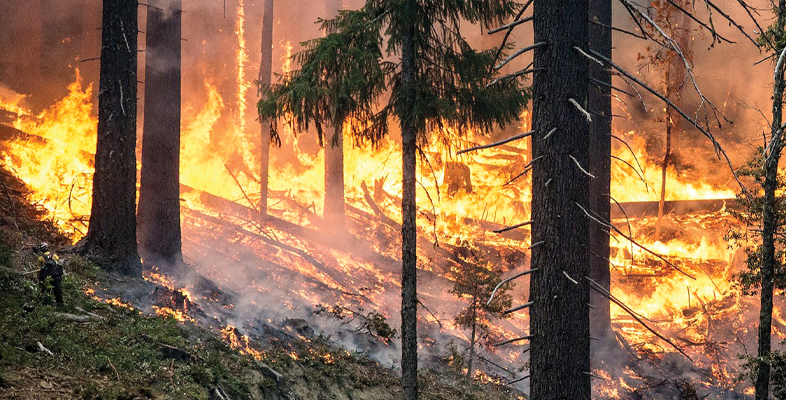4.3 The pyrodiversity-biodiversity hypothesis
Without fire, ecosystems that operate to a predictable seasonal or cyclical pattern can, over time, become uniform in how they look and function. Disturbances such as fire break up this uniformity. The pyrodiversity-biodiversity hypothesis recognises that a complex fire regime (that varies in frequency and intensity across the landscape) can create habitat complexity by establishing shifting mosaics of patches of different size and post-fire age of regenerating vegetation. This promotes and maintains diverse plant functional types and their associated fauna thereby generating diversity.
Patch mosaic burning is often advocated in fire ecology as a way of increasing biodiversity. It is based on the premise that a complex habitat provides a diversity of microclimates, resources and shelters and hence supports a diversity of plant but also animal species. As you have already seen, many animals exploit opportunities presented by fire, and the diversity of conditions that occur during recovery following a fire event would allow a succession of species to exploit these conditions. For example, in the forests of northern Canada, deer, mice, moose and black bear are found exploiting vegetation characteristic of early post-fire stages, while northern red-backed voles and caribou are more typically found in habitats characteristic of later post-fire stages of more than 50 years old. A landscape that includes both early post-fire stages and later stages of post-fire recovery therefore supports more species.
There is some evidence that in the absence of the patch mosaic created by fires, diversity declines significantly. For example, it is believed that the decline in small mammal species in central Australia, where clearing for agriculture has not occurred, is a consequence of the loss of fine-scale habitat mosaics created by Aboriginal landscape burning (e.g. Ziembicki et al., 2014). In the absence of these frequent, less intense fires, large, intense and infrequent fires caused by lightning strikes have obliterated the mosaic of burnt patches of varying ages that the Aboriginal people once maintained, resulting in a largely homogenised landscape supporting fewer species of plants and animals.
However, the ‘pyrodiversity begets biodiversity’ argument has also been criticised for lacking a solid empirical or theoretical basis. Several recent studies suggest that fire management strategies aimed at maximising pyrodiversity may actually threaten some species, e.g. Taylor et al., 2012; Nimmo et al., 2013; Kelly et al., 2012.
